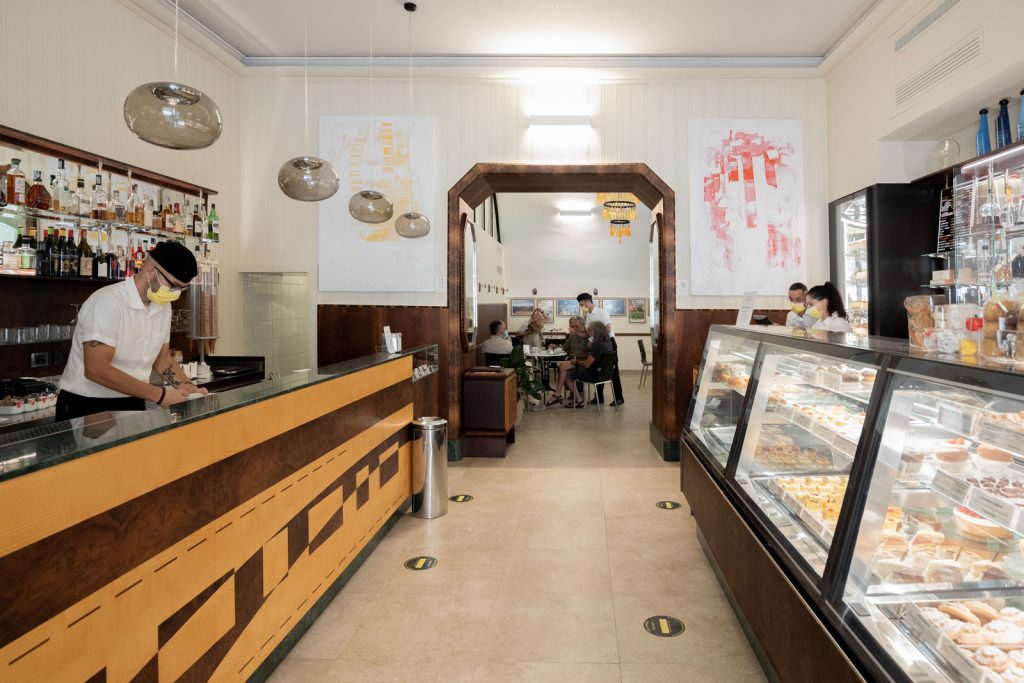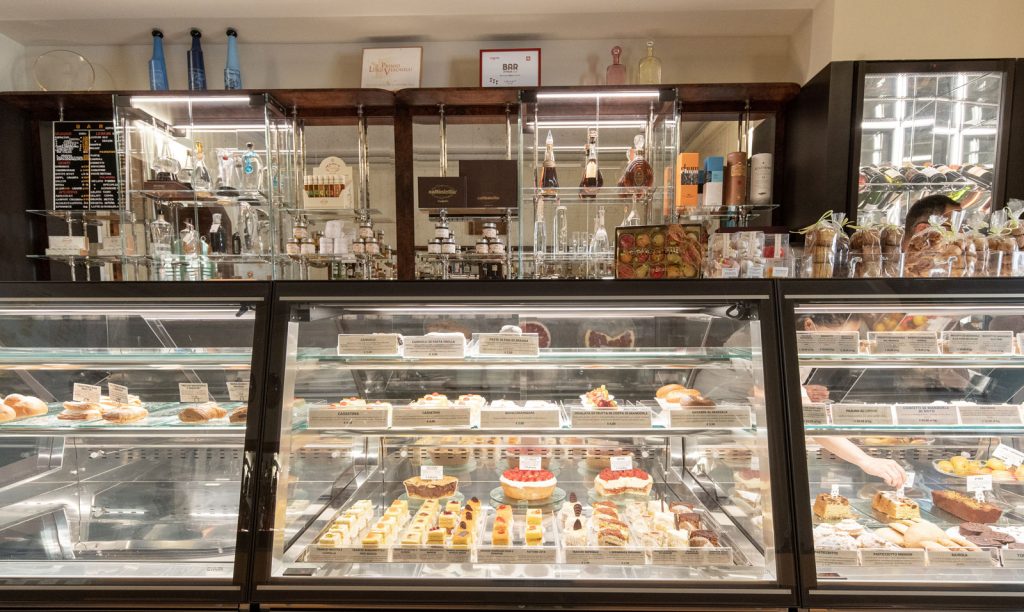Corrado Assenza and the Caffè Sicilia in Noto.

Confectionery art that speaks of culture and looks out to the world.
Just as his sweets fill the eyes and make the taste buds explode, so Corrado Assenza’s words fill the veins of those who feed on small and great true stories, because when he talks about Caffe Sicilia, a family business born in Noto one hundred and thirty years ago and today an icon and expression of a confectionery art recognized throughout the world, he does so with passion, wisdom, humanity and humility. He speaks with the calmness of one who is used to listening rather than saying, he tells with the experience of one who is used to learning rather than teaching. And if you think that the success of a name like Caffè Sicilia, which has already crossed the history of four generations, has to do with tradition you are wrong, because for Corrado Assenza the most significant tradition in human history lies in innovation.
Caffè Sicilia in Noto is considered the temple of the ancient Sicilian confectionery art: can you explain what underlies its success?
In fact, when people talk about us they talk about Sicilian confectionery art, while I would prefer to talk about confectionery art in its Sicilian meaning. Because, if the world is a book Sicily represents a chapter; if the world is an epistle Sicily is a comma, it is a part of the whole: we do not need a bridge to be connected to the mainland. We use the sea to navigate and at Caffè Sicilia we have been doing that for one hundred and thirty years and for five generations, the last one represented by my son who already works here. Interpreting their own contemporaneity according to the era in which they lived, or are living, each generation has dialogued with the world by always placing people and ingredients at the center. We are islanders, not isolated, and creating bridges with other territories and opening up to different cultures is part of our success and is also the secret that makes contemporary desserts that we might call timeless like cassata or cannoli, which have more than a thousand years of history, but which manage to float and move forward as interpretations of someone who makes them current.

A view and approach that could be defined almost universal…
Recipes that are more than a hundred years old coexist in our CIAM showcases, as well as recipes that were born yesterday or are about to be born, but all inspired by the same sentiment, which is to produce pastries that use the best raw materials that belong to this territory, but not exclusively to this territory. Our rule is not zero kilometer but good kilometer: we do as many kilometers as necessary to have the best ingredients that help us make sweetness daily in our own way. A non-traditional way: we are not traditionalists, rather we think that the most important tradition in human history is innovation. As my son says, for us things have to be thought out and we think them out by collecting thoughts without replicating those of others. That is why we prefer to talk about culture rather than tradition, because culture if well used is that tool that allows us to dismantle the archetype and not confront something that does not belong to us as it came from the past as tradition dictates. We start again from the blank sheet of paper, constructing buildings, putting bricks and adding words that come from new elements we have known or that are sometimes suggested to us by the ingredients themselves.
You mentioned the CIAM showcases, and I imagine the same innovation behind your research was among the elements connecting you with the brand you chose for the Café Sicilia renovation project. Can you tell us about that?
There was no need to change or innovate at the level of architecture and furnishings, rather there was a need to maintain, to preserve. But our preservation is not contradictory to our feeling as innovators. In this case, the need that emerged with architect Corrado Papa, who oversaw all the renovation work that involved the entire 18th-century building in the historic center of Noto in which Café Sicilia is located, was to make sure that those entering would not even notice the change. We didn’t need to transform anything or wow the customer with special effects, nor did we need to change the skin, we just needed to make the one that was already there brighter and more elastic. Yet, underneath the skin everything changed because the technology of the 2000s came, and CIAM came, so new pozzetti counters, new MYA display cases, Compact counters, new water refrigeration, and remote control of all the technology both in the room and in the lab. And if you ask me why all this in a café that has one hundred and thirty years of history, I tell you because people are at the center for us, and because we want to offer our products in the best possible conditions to anyone who chooses to come here-and even faces intercontinental travel to do so, sometimes. Today, this is because of the technology that CIAM has provided us with.

The project not only involved technological innovation, but also the conservation aspect of the furniture, as he said, so the materials, finishes, workmanship…
The collaboration with CIAM began during the Covid period, and we got to know each other long-distance through video calls and sketch files first, and working drawings later, sent by e-mail. The first time I physically entered the company was to view the completed work, before it was disassembled and prepared for shipment, and I was amazed at how all the department heads, from glass to carpentry, refrigeration to paints, wanted to meet the madman who had commissioned such complex furniture that in some cases had required workmanship that had been missing for at least forty years. Without going into details, they were able to authentically replicate furniture that ranged from materials such as Guatemalan green marble, ash, brass, glass, walnut burl, and required great technical skills and more. Even, I remember that the head of the carpentry department thanked me because working on the Caffè Sicilia project had allowed him, shortly before he retired, to show the young, newcomer carpenters the technique of inlaying that he would otherwise never have had the opportunity to have them learn. I was very impressed by the human aspect I encountered in CIAM.
Let’s get back to desserts and talk about chocolate. How is the new life of Lavarotti1938 chocolate, which you now create for Fabio Fazio and Davide Petrini, going?
This new adventure is another journey, another way of transposing our experience into someone else’s, because it belongs to Fabio, Davide and their respective wives; I merely gave them an inspiration, a basic outline that they will follow as long as they want. Mine was a transposition of ideas to make them understand the infinite possibilities there are to be real and true. So, thinking: thinking for people and doing it as if we were thinking for ourselves, perhaps disrupting, breaking the rules of custom, which then becomes tradition, but putting the interest in the ingredient back at the center. If you put the interest in the ingredient, in this case chocolate, at the center, and you decide that it becomes a traveling companion to tell the story of Italy and the Mediterranean, then all the other traveling companions of chocolate, the ingredients you combine it with, must also be up to it. And to do that you have to know the places, you have to put at the center the people who give you those ingredients. Like I did with CIAM.
ph: Francesco Di Martino